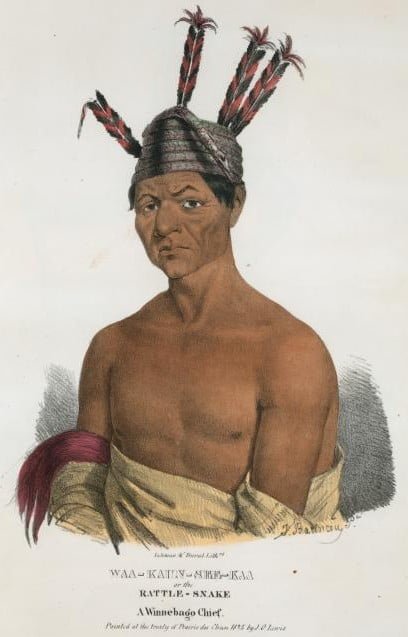
In the preparation of this book it has been the compiler’s aim to make the work as complete and correct as possible. Diligent search has been made for information, and considerable pains have been taken to give the people of Winneshiek county, a reliable account of the Indians who once inhabited this section of the country. The writer has discovered that a number of erroneous statements in regard to these Indians have unfortunately found their way into print. In such instances every effort has been made to procure accurate information.
In gathering the data here assembled the writer has had the kind assistance of the Wisconsin Historical Society, the Iowa Library Commission, and the United States Ethnological Bureau. Thanks are also due to Oliver Lamere (a first cousin of Angel De Cora), who has made diligent search for desired information among members of his tribe on their reservation in Nebraska; Geo. W. Kingsley, Angel De Cora, Little Winneshiek, and Antoine Grignon (all of whom are Winnebago Indians, except the last, who is part Winnebago and part Sioux); Dr. Eben D. Pierce; Roger C. Mackenstadt; Chas. H. Saunders, and H. J. Goddard.
- Winnebago Indian Tribe
- Removal to Iowa
- Social Organization
- Manners and Customs
- Religion
- Decorah Family Genealogy
- Additional Decorah Family Members
- Decorah Family Line
- Decorah Exhumed
- Chief Winneshiek
- We-no-shee-kah and his Band
- Mission School Trading Post
- Fort Atkinson
- Barracks at Fort Atkinson
- Removal From Iowa
- Reminiscences
1. Peace pipe presented by Old Gray Headed Decorah to Maj. Zachary Taylor
2. Chief Winneshiek’s pipe (after suggestion furnished by Oliver Lamere)
3. Winnebago courting flute, known on the frontier as a deerskin flute
Preface to Indian History of Winneshiek County Iowa
All of the above have responded in a most gratifying manner to requests for information, some of them taking the trouble to prepare long communications,. which have been indispensable in the preparation of the following article and which the writer cherishes as among his most valued possessions. All quotations credited to them in this article have been taken from letters received by the writer since December, 1912.
In regard to Angel De Cora, a summary of her career is Oven in the body of the article, where the main facts abort Antoine Grignon’s life will also be found. That the reader may form a proper conception of the value of the information imparted by other individuals mentioned above (and all this has a bearing on the trustworthiness of the article), the following statements are appended.
“During the month of August, 1911, there came to Madison from the Nebraska reservation two Winnebago Indians, Mr. Oliver Lamere and Mr. John Rave. Both men were in the employ of Dr. Paul Radin of the American Bureau of Ethnology, who for several years past has been conducting researches among their tribe for the government. They remained in Wisconsin until the first weeks in September. Both were Indians of exceptional intelligence. Mr. Lamere is a grandson of Alexander Lamere, one of the group of early Lake Koshkonong furtraders, and a grandson of Oliver Armel, an early Madison furtrader. Mr. Lamere [Oliver] acted as Dr. Radin’s assistant and interpreter.” From an article in “The Wisconsin Archeologist,” 1911, by Charles E. Brown, secretary and curator of The Wisconsin Archeological Society, and chief of The State (Wis.) Historical Museum, Madison, Wis.
“George Kingsley a member of the Wisconsin Branch of the Winnebago Tribe of Indians, I consider to be the best authority on these matters.”-L. M. Compton, Superintendent of Tomah School (United States Indian Service), Wisconsin.
Dr. Eben D. Pierce is a member of the state (Wis.) and county (Trempealeau) Historical Societies. He has written a biography of Antoine Grignon, a short history of the Winnebago Indians, and has contributed several articles on the history of that section.
Roger C. Mackenstadt, now at the Uintah and Ouray Indian Agency, Utah, was formerly chief clerk at the Winnebago reservation in Nebraska.
Chas. H. Saunders is a white man who has lived with the Indians most of the time (since he was thirteen years old). He married into the Waukon family of Winnebago Indians, whose language he speaks fluently. He was raised at Lansing, Ia., and was for a number of years a resident of Wisconsin. He now resides in Nebraska.
H. J. Goddard of Fort Atkinson has been a resident of Winneshiek county since 1849. Mr. Goddard has willingly placed at the disposal of the writer his well-stored memory of early recollections. He is a Civil War veteran and is thus especially competent to speak with authority in regard to military matters connected with the fort.
Other old settlers have also responded cheerfully to requests for information. In most instances their names appear in the article. The writer acknowledges a debt of gratitude to them all.
The following authorities have been consulted:
- History of Winneshiek and Allamakee Counties. W. h. Alexander, 1882.
- Atlas of Winneshiek County. Anderson & Goodwin, 1905.
- The Making of Iowa. Henry Sabin, LL. D., 1900.
- History of Iowa, v. 1. G. F. Gue, 1903.
- The Red Men of Iowa. A. R. Fulton, 1882.
- The Indian, The Northwest. C. & N. W. Ry., 1901.
- North Americans of Yesterday. F. S. Dellenbaugh.
- Handbook of American Indians. B. of A. E., 1911.
- Smithsonian Report, 1885.
- Annals of Iowa.
- The Wisconsin Archeologist.
Charles Philip Hexom. June 18, 1913

